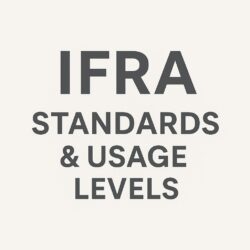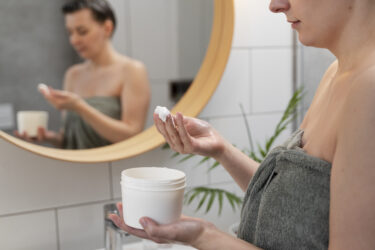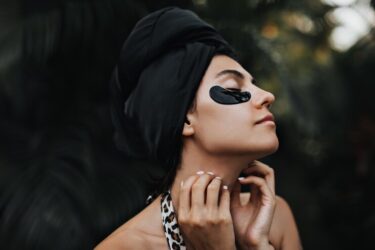Decoding INCI Names:
Have you ever picked up a moisturizer, stared at the ingredient list, and felt like you were reading another language? Aqua, ethylhexyl palmitate, phenoxyethanol… What does it all mean? You’re not alone. Over 80% of beauty shoppers feel overwhelmed by ingredient labels, according to a 2025 Nielsen survey. But here’s the good news: Decoding these names isn’t as hard as it seems.
In this guide, I’ll simplify the science behind INCI names (the “secret code” on your products), teach you how to spot red flags, and help you choose safer, cleaner skincare. Let’s turn confusion into confidence!
What Are INCI Names?
INCI stands for International Nomenclature of Cosmetic Ingredients, a globally recognized system for labeling ingredients in skincare and personal care products. It ensures consistency across countries and brands, making product labels easier to understand.
For example, “vitamin C” might appear as ascorbic acid or sodium ascorbyl phosphate—both different forms of the same vitamin with unique stability profiles.

Why INCI Names Matter?
- Transparency: INCI names eliminate marketing fluff and list ingredients precisely, helping consumers know exactly what’s inside.
- Safety: Some names—like “fragrance”—can hide over 3,000 undisclosed chemicals, and others like methylisothiazolinone have been linked to contact dermatitis and eczema, as well as potential disruption to the skin’s microbiome.
- Regulations: Since 1998, cosmetic products in EU, US, and Canada must list ingredients using INCI names under legal guidelines.
- Fun Fact: INCI names often come from Latin, English, or scientific roots—for example, Aqua means water, and Cera Alba refers to purified beeswax.
How to Decode INCI Names:
INCI names are a vital part of understanding the composition of cosmetic products, providing clarity on what each ingredient does and its origin. By familiarizing yourself with INCI names, you can make informed decisions about what products to choose and avoid based on your skin’s needs and sensitivities.
Step 1: Understand the Order of Ingredients
Ingredients on a label appear in descending order of concentration, which means the first few dominate the formula.
Roughly 80–90% of a product is made up of its first 5 ingredients. If ingredients like alcohol denat. or parfum appear early, the product may be irritating or heavily scented.
Example:
- A moisturizer listing Aqua, Glycerin, Caprylic/Capric Triglyceride up front likely uses water and humectants as its primary base.
- If fragrance, SD alcohol, or citrus oils are listed early, those with sensitive skin should be cautious.
Step 2: Learn the 5 Rules of INCI Naming
- Plant Extracts: Named using Latin binomials, e.g., Aloe Barbadensis Leaf Juice is simply Aloe Vera.
- Chemicals: Listed using IUPAC or scientific terms—Sodium Lauryl Sulfate is a surfactant that can strip moisture.
- Colorants: Use “CI” followed by numbers; for instance, CI 77891 is titanium dioxide, a mineral UV blocker and pigment.
- Fragrances: Whether natural or synthetic, all scents are labeled Parfum or Fragrance—no distinction is required.
- Concentration Rule: Ingredients used in concentrations below 1% can appear in any order after the top actives.
Step 3: Spot Red Flags
Many skincare ingredients have known safety concerns. Use reliable tools to check them before purchasing:
| Ingredient | Function | Concern |
| Parabens (e.g., Methylparaben) | Preservative | Potential endocrine disruptor |
| Sodium Lauryl Sulfate (SLS) | Foaming agent | Skin dryness and irritation |
| PEG-40 Hydrogenated Castor Oil | Emulsifier | May be contaminated with 1,4-dioxane |
| Butylated Hydroxyanisole (BHA) | Antioxidant | Potential carcinogen (IARC Group 2B) |
Pro Tip: The EWG Skin Deep database gives each ingredient a toxicity score from 1 (low risk) to 10 (high risk).
5 Common INCI Name Myths Debunked
With so many complex-sounding names on cosmetic labels, it’s easy to fall for common misconceptions about ingredients. Let’s break down some of the biggest myths surrounding INCI names—and uncover the real science behind them.
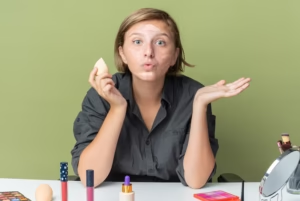
Myth 1: “Long Names Mean Harsh Chemicals”
Not all long or scientific-sounding names are harmful—many are just the standardized INCI terms.
Truth: For example, Sodium Hyaluronate is simply the salt form of Hyaluronic Acid, a well-known hydrating ingredient—learn more about its benefits and uses here. Similarly, Tocopheryl Acetate is a stable form of Vitamin E, not a synthetic danger. INCI uses technical names for clarity, not to confuse or scare you.
Myth 2: “Natural Ingredients Are Always Safe”
Just because an ingredient comes from nature doesn’t guarantee it’s safe for your skin.
Truth: Poison ivy (INCI: Toxicodendron Radicans), arsenic, and even essential oils like cinnamon or peppermint can trigger allergic reactions, burns, or irritation. Many natural ingredients are highly potent and need to be carefully dosed. Biotech ingredients, by contrast, are designed for purity and consistency—often making them safer for sensitive skin.
Myth 3: “Alcohol in Skincare Is Bad”
The word “alcohol” gets a bad rap, but not all alcohols are created equal in cosmetic science.
Truth: Short-chain alcohols like Alcohol Denat. or Isopropyl Alcohol can be drying. But Fatty alcohols—such as Cetyl Alcohol, Stearyl Alcohol, and Cetearyl Alcohol—are emollients. They soften the skin, stabilize emulsions, and enhance texture without stripping moisture. It’s all about the type and function of the alcohol used.
Myth 4: “Fragrance-Free Means No Scent”
“Fragrance-free” doesn’t mean the product will be completely odorless—it’s a labeling term with a specific meaning.
Truth: Fragrance-free simply means that no artificial or added fragrance blends (often listed as Parfum or Fragrance) are included. However, natural raw materials—like rosehip oil, chamomile extract, or green tea—can still impart a noticeable scent. So if you’re sensitive to smell, check the full INCI list, not just the marketing claims.
Myth 5: “Organic = Clean”
It’s a common misconception that “organic” automatically means the product is safer or better for your skin.
Truth: “Organic” only refers to farming methods—meaning ingredients are grown without synthetic pesticides or GMOs. It says nothing about safety, stability, or skin compatibility. For example, organic coconut oil can still clog pores, and organic essential oils can be highly sensitizing. Always review the full formulation, not just the organic label.
How to Choose Clean Beauty Products
Choosing clean beauty means prioritizing safety, transparency, and sustainability. The best clean products avoid harsh chemicals, use eco-friendly practices, and are often backed by trusted certifications.
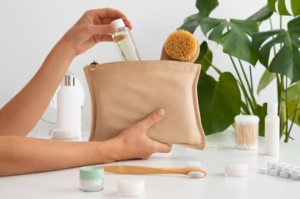
Look for These Certifications
- ECOCERT: Disallows parabens, GMOs, and petrochemicals in certified formulas.
- COSMOS Organic: Requires at least 95% certified organic ingredients by weight.
- Leaping Bunny: Ensures that no animal testing was used at any production stage.
Avoid These 5 Ingredients
- Formaldehyde Donors (e.g., DMDM Hydantoin): Linked to cancer and contact allergies.
- Oxybenzone: A hormone disruptor found in chemical sunscreens, also harmful to coral reefs.
- PEGs (Polyethylene Glycols): Often contaminated with carcinogenic 1,4-dioxane during manufacturing.
- Coal Tar Dyes (e.g., CI 15850): Common in hair dyes, some are classified as probable carcinogens.
- Phthalates (often hidden in fragrance): Linked to fertility issues and hormone disruption in multiple studies.
FAQs: INCI Questions,
Q1: What does “parfum” mean on labels?
A: “Parfum” can legally stand in for up to 3,000 compounds, including allergens or phthalates. If you’re sensitive, look for “fragrance-free” and allergen-tested labels.
Q2: Is mineral oil bad for skin?
A: Cosmetic-grade mineral oil (Paraffinum Liquidum) is highly refined and non-comedogenic, though cheaper versions may clog pores if not properly filtered.
Q3: Why is there alcohol in my moisturizer?
A: Fatty alcohols like cetyl and stearyl alcohol help stabilize emulsions and lock in moisture. They differ from drying alcohols like ethanol or isopropyl alcohol.
Q4: How do I know if a product is cruelty-free?
A: Look for official logos like Leaping Bunny or PETA. Brands such as The Ordinary, COSRX, and Paula’s Choice are verified cruelty-free.
Q5: What’s the difference between “non-toxic” and “clean” beauty?
A: “Non-toxic” means free of known harmful chemicals. “Clean” is often used for marketing—so always cross-reference with certifications and safety ratings.
5 Tools to Simplify INCI Decoding
- INCI Decoder (incidecoder.com): Paste any product’s ingredient list for a breakdown of function, safety, and skin type compatibility.
- EWG Skin Deep Database: Features safety data on 100,000+ ingredients, including hormone disruptors and allergens.
- Think Dirty App: Scan barcodes in real-time to find safer or greener alternatives.
- COSDNA: Highlights comedogenic (pore-clogging) ratings, ideal for acne-prone or oily skin users.
- CertClean: Discover verified non-toxic and ethically formulated products by region or brand.
Key Takeaways
- First 5 ingredients matter most—they make up the majority of what you’re putting on your skin.
- Latin = plant-based: Aloe Barbadensis Leaf Juice is just the INCI name for aloe vera.
- Skip synthetic fragrance if your skin is sensitive; look for unscented or fragrance-free alternatives.
- Use ingredient analysis tools like INCI Decoder, COSDNA, and Think Dirty for quick safety checks.
- Certifications = proof: Labels like ECOCERT, COSMOS, and Leaping Bunny validate clean beauty claims—don’t just trust the word “natural.”
Conclusion:
Understanding INCI names isn’t just about deciphering scientific jargon—it’s about taking control of what you put on your skin. With a bit of practice and the right tools, you’ll start seeing patterns, spotting red flags, and feeling more confident in your choices. The beauty industry may not always speak clearly, but now you can read between the lines—and shop smarter because of it.
Clean beauty isn’t a trend—it’s a mindset. And you’re now better equipped to navigate it.

